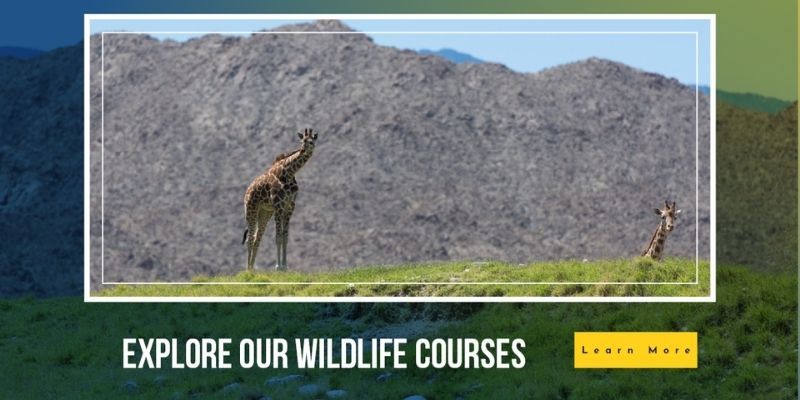You would be hard-pressed to find someone who didn’t appreciate wildlife in some way. Whether it’s getting out amongst nature for a long walk or marvelling at the wild plant and animal species that exist around us, spending time in natural environments can be incredibly soothing for the soul.
The sad reality is that much of this untamed life is at risk of extinction due to human activity. So, while you may be blissfully enjoying its beauty today, the actions you and the rest of humanity take in life means many wildlife species are less likely to be here in years to come.
Thankfully, there are now numerous steps taken to conserve wildlife. Wildlife conservation trusts have been set up to take action against the harmful human activity, and awareness days like Wildlife Conservation Day exist to draw attention to this catastrophic problem.
Though, while people are aware of the activities to conserve wildlife, many people still aren’t sure of the ramifications of wildlife loss or the aim of wildlife conservation.
What is Wildlife Conservation Definition?
The definition of wildlife conservation is the activities humans consciously partake in to protect wild plants, animal species and wild habitats. These activities include the implementation of legislation that officially protects wildlife and endangered species, the official protection of public lands, and the responsible actions of the public to lessen the detrimental impact of human activity.
Wildlife conservation efforts have been in action since ancient times. The first mention of these was in the Bible when restrictions were put on taking game. However, as the human population grows at a rapid rate, the need for heightened protection methods was also amplified.
What is the Need for Conservation of Wildlife?
Since the dawn of human existence, we have done an excellent job of inhabiting almost every corner of the globe. While this is impressive in terms of our societal development and evolution, it has had a drastic impact on wildlife species.
As our population grows, so too does the need for consumption and space. This eradicated much of the natural plant life that existed in these spaces, as well as pushed wild animal species out of their natural habitats and forced them to live in more unnatural environments.
In addition to this, humans have introduced many invasive species over the years. As these are foreign additions to an already established ecosystem, in many cases they have wreaked havoc on the natural balance of native plant and animal species.
These and many more human-related reasons have led to a need to protect wildlife, in particular wild animals. This is because nature cannot exist without them, many people don’t realise this, but animals are key distributors of seeds and allow flora to thrive. Without wild animals, ecosystems will fall apart, and should that happen, our civilisation loses a lifeline too.
As such, the aim of wildlife conservation is to ensure the survival of wildlife and to educate the public on how to live sustainably alongside them.

How Technology Can Transform Wildlife Conservation
With the rapid escalation of humans encroaching on natural life and spaces, there has been a growing need for new ways to conserve wildlife. As such, more recently there has been an increasing use of technology in wildlife conservation.
Advanced technology and the rise of the internet has given the human race an opportunity to improve their wildlife conservation methods. As well as preserve and rebuild the environments they have destroyed in innovative ways.
Some examples of the use of technology in wildlife conservation include:
Drones
Aid the ability to track illegal activity and monitor people trespassing in national parks and wildlife reserves. By using drones, game and wildlife conservation trusts can pinpoint when and where illegal activity is taking place and have a better chance of prosecuting the individuals.
AI Image Processing
Artificial Intelligence has catapulted the ability to identify and trace illegal wildlife online. Certain AI programs have been able to recognise 75% of images of illegal wildlife trade online.
Data Analytics
With the ability to have one single location for all the relevant information, authorities have all the information at hand regarding suspects of illegal wildlife activities. This makes the prosecution of these individuals more attainable and helps reduce the amount of crime committed in this area.
What Can We Do to Help Wildlife Conservation?
As the main threat to wildlife stems from human activity, we as humans need to do what we can to limit our impact on the natural world.
If you want to help wildlife thrive, some tips from The National Human Education Society include:
- Reducing, reusing, and recycling waste to protect wildlife habitats
- Adopting a plant-based diet to reduce the wildlife habitats that are destroyed to house and feed livestock
- Refraining from partaking in sport hunting
- Writing to your local government to express your support for laws protecting wildlife and natural habitats
- Be considerate and cautious when interacting with wild animals around your home and when visiting public areas
- Educating yourself about invasive species and doing your part to stop their spread, as well as planting only native and non-invasive plants in your garden

How to Get a Job in Wildlife Conservation
There are many ways to get into wildlife conservation jobs if you feel this is the career path for you. Depending on your interests and level of qualification, you can enter numerous careers at different levels that all play an important role in the protection of wildlife species.
If you want wildlife conservation jobs no experience, you could start by applying for wildlife conservation volunteering opportunities. This way you can start learning from the ground up while partaking in activities to conserve wildlife. These opportunities are often available with a wildlife conservation society, or in wildlife conservation parks. Admittedly it may take you some time to get the knowledge required for a paid opportunity, but the hands-on experience you will gain will be of incredible value.
If you want to step into a paid wildlife conservation job, you need to evidence applicable knowledge and ideally experience. You can gain this by studying wildlife conservation courses, many of which are online for your convenience.
With learndirect, you can study:
- Access to Higher Education Diploma (Land Based Science)
- African Wildlife Conservation Studies
- Conservation
- Carnivore Studies: Big Cats
- Wild Animal Behaviour
- Wildlife Photography
- Wildlife Rehabilitation Studies, and more
You can view all our wildlife courses on our website.
With the knowledge gained in these courses, you can progress directly into entry-level paid wildlife conservation jobs. Alternatively, you can take your knowledge further by studying a wildlife conservation degree and pursuing more senior positions in wildlife conservation.
Study Wildlife Conservation Online
If you feel passionate about wildlife conservation and you’re ready to take this into a career, learndirect will give you the desirable knowledge for numerous jobs in this space.
Whether you want to help conserve the aquatic life and coral along The Great Barrier Reef in Australia, protect animals from poaching in Africa, or help sustain the life that exists on home soil in the UK, you can study a related course online.
We have numerous course topics related to wildlife conservation, find out more by discussing the options with our Course Executives today. They will answer all the questions you have and help you find the course that is most suited to your interests.
Call them now on 01202 006 464 or contact them online. Otherwise, you can learn more about wildlife conservation courses below.
You can also keep track of all animal awareness days and events with our FREE calendar! Download it here.



















